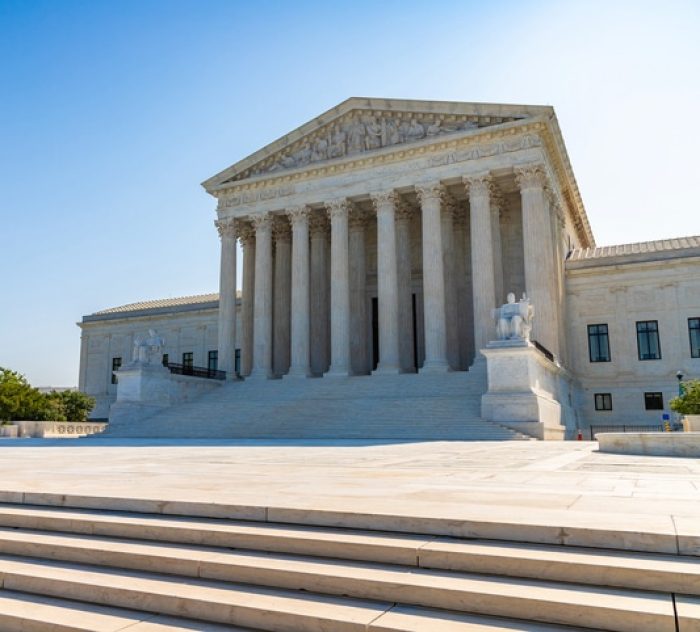The Collapse of Silicon Valley Bank
On Friday, March 10, the Federal Deposit Insurance Corporation (“FDIC”) announced its takeover of Silicon Valley Bank (“SVB”) as SVB’s appointed receiver. SVB, as the primary lender to some of the biggest tech firms, was forced to place nearly $175 billion in customer deposits under FDIC control as a result.
The takeover came on the heels of rising interest rates drying up the environment for start-up funding. SVB, a state-chartered bank, provided banking services to nearly half of the country’s venture capital-backed technology and life science start-up companies. Historically, the bank took on a large number of sizable deposits from these customers, kept a minimal amount of these deposits in cash, and invested the rest in long-term debt, including Treasury bonds. As interest rates continued to rise and the funding for start-ups began to run dry, SVB was met with a slew of withdrawals from its clients. In order to fulfill these withdrawal requests, the bank was forced to sell off its investments at a considerable discount (newer government bonds paid more in interest, making SVB’s then-current holdings less attractive to prospective purchasers). This led to the bank’s dismaying disclosure on Wednesday, March 8, that it had lost nearly $2 billion when it was all but forced to sell some of its investment holdings.
The Bank’s Unique Problem
SVB, unlike most banks, catered specifically to a mixture of start-up companies and their executives. As a result, its clientele was made up of customers with large, mostly uninsured deposits. (The FDIC only insures amounts up to $250,000, leaving customers with deposits above this threshold at risk of not getting all of their money back in the event of a bank failure.) Following SVB’s Wednesday announcement, industry-wide panic ensued and customers rushed to pull out their money, resulting in a seismic run on the bank.
Sweeping Federal Rescue
On Sunday, March 12, both the FDIC and the Federal Reserve announced that all depository customers of SVB would have access to their deposits starting Monday, March 13, whether insured or uninsured under the FDIC—a sweeping act signaling Washington’s rush to contain the market effects of SVB’s collapse.
On the same day, regulators closed Signature Bank in an attempt to prevent further contagion in the banking system in the wake of SVB’s takeover. Signature Bank was a New York-based regional bank that had previously focused on digital assets by becoming one of a few banks to accept crypto deposits. It experienced a run of its own when its customers, uncertain about the bank’s connections with cryptocurrency and spooked by SVB’s takeover, withdrew more than $10 billion in deposits. The agencies stated Sunday that they would also make whole the depositors at Signature Bank. This action was made by invoking a rare authority under the FDI Act after regulators agreed that the current situation posed a risk to the financial system.
The Receivership Process and Updates
Headlines on Friday and throughout the weekend touted descriptions of SVB’s takeover as akin to a “collapse”, “fallout”, or “failure”. However, it’s important to understand the distinction between a complete shutdown of a financial institution and its placement into receivership. As with any receivership process, a “receiver” (similar to a trustee) steps into a troubled company to manage the entire company, its assets, and all financial and operating decisions. Similarly, on Friday, the FDIC took control of SVB’s assets and liabilities in order to assess how those assets and liabilities would be acquired, assumed, and/or liquidated.
The first major action taken by the FDIC was the creation of an interim institution called the “Deposit Insurance National Bank of Santa Clara”, to which it transferred SVB’s insured deposits, pursuant to the powers afforded it under the Federal Deposit Insurance Act (the “FDI Act”). Under the FDI Act, it may also sell a financially distressed institution to other banks or liquidate it entirely.
On Monday morning, March 13, the British government and the Bank of England announced that SVB’s U.K. arm was sold to HSBC for £1. Of note, Bank of London, a two-year-old institution, had reportedly submitted a bid to acquire the U.K. subsidiary. It was also reported that Oaknorth Bank and ADQ, an Abu Dhabi state-backed investment vehicle, expressed interest in the U.K. subsidiary. On this side of the pond, there is hope that these acquisitions of pieces of SVB could make the American bank smaller and cheaper, and therefore more attractive to prospective buyers.
The FDIC reportedly had started an auction for SVB on Saturday that was set to be finalized by Sunday afternoon. As of Tuesday, no buyer for the U.S. business has been announced.
The Fed’s New Lending Program Provides Short-Term Reprieve
Further to its Sunday announcement that SVB’s and Signature Bank’s customers would be made whole, federal regulators unveiled an extraordinary backstop program for the U.S. banking system—the most sweeping measure of this kind since the 2008 crisis. The Federal Reserve Board issued a press release Sunday evening, announcing that it will make additional funding available to eligible depository institutions to help ensure that banks have the ability to meet the needs of all their depositors. To this end, it has created a new Bank Term Funding Program, which offers loans of up to one year in length to banks, savings associations, credit unions, and other eligible depository institutions. The new lending program, which is backed up by $25 billion in cash from the Treasury’s Exchange Stabilization Fund, provides a broad backstop to the banking industry. The Federal Reserve, however, stated that it does not anticipate it will be necessary to draw on these backstop funds.
What this Means for Regional Banks
Potentially Higher FDIC Fees for Small Banks
While the agencies announced that depository customers will be made whole, and that taxpayers will not be paying for the rescue of SVB’s and Signature Bank’s uninsured deposits, small banks may well pay the price. The FDIC will apply funds from its Deposit Insurance Fund (“DIF”) to make depositors whole. If there are any losses to the DIF, the FDIC will seek to recoup what it pays out by getting a special payment from its FDIC-member institutions that pay into the DIF. Assuming there are losses, the FDIC is sure to raise fees, but from whom remains to be seen. Small community and regional banks are arguably less likely to benefit from the sweeping measures implemented to rescue SVB and Signature Bank, but they may be among those forced to pay up at the end of the day.
Greater Scrutiny by Regulators
Regional banks should expect more scrutiny in the wake of these developments. Regulators will likely force small banks to raise their capital requirements to levels similar to those required of larger banks. (This, in turn, may mean that borrowing costs for businesses and consumers will go up in the short term on top of higher interest rates.)
Since the takeover of SVB and Signature Bank, much of the criticism attributed blame to the banking industry as a whole for pushing back on stricter regulations after 2008. Lawmakers have since called for tighter regulations. Some banking experts suggest the Dodd-Frank package might have forced SVB to better handle its interest rate risks if it were still in effect, alluding to the rollback in 2018 that reduced how often regional banks had to submit to stress tests by the Federal Reserve. The 2018 measure eased restrictions on all but the largest banks—raising the threshold from $50 billion to $250 billion under which banks were deemed too important to the financial system to fail. Below that threshold, institutions do not have to undergo stress tests or submit “living wills”. While SVB was considered a smaller bank by Wall Street standards, it had around $200 billion in assets as of January.
While regulators have spent much of the post-2008 era focusing on larger banks, SVB, Signature Bank, and this weekend’s events indicate that regional banks will likely become targets for increased regulatory scrutiny and pressure to shore up their capital and liquidity requirements.


